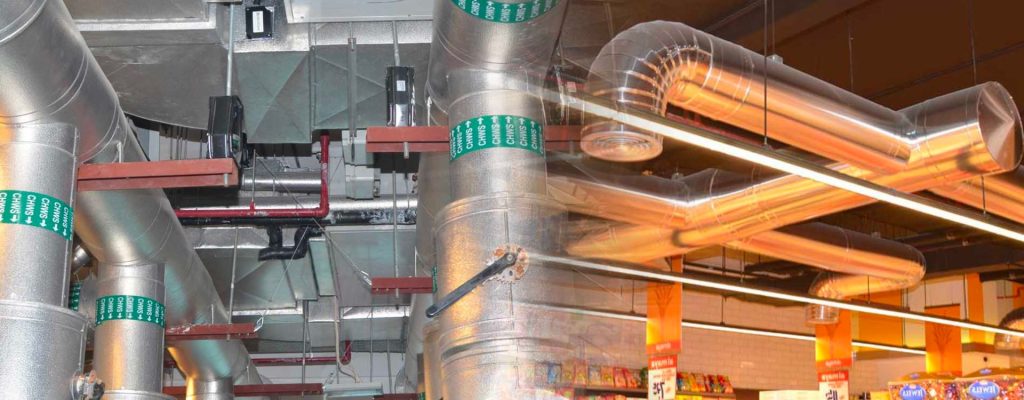
HVAC Cladding Works
Cladding with Aluminum or in GI plays a vital part and is an in eliminable protective layer for mechanical insulation systems including pipes, vessels, and equipment in all exposed areas prone to mechanical damage.
It protects the insulation and underlying pipe/vessel from physical damage, UV exposure, corrosive atmospheres, and water.
It protects the insulation and underlying pipe/vessel from physical damage, UV exposure, corrosive atmospheres, and water.
Cladding with Aluminum or in GI commonly known as cladding which is available in smooth; stucco embossed, and corrugated.
Smooth (Plain Mill) Finish This is a very popular finish and is the “default” for numerous end-users/specifiers who prefer the clean look of this finish. A smooth surface is easily cleaned and provides what many consider to be a more attractive appearance.
Stucco Embossed Finish This is another popular finish used. The stucco-like surface texture hides small imperfections and scratches caused by physical damage during or after installation. This finish also reduces reflectivity while still looking very professional.
Corrugated Finish Another significant option when choosing aluminum is corrugation. Corrugation is available in a variety of sizes and adds stiffness to the jacket material.
Smooth (Plain Mill) Finish This is a very popular finish and is the “default” for numerous end-users/specifiers who prefer the clean look of this finish. A smooth surface is easily cleaned and provides what many consider to be a more attractive appearance.
Stucco Embossed Finish This is another popular finish used. The stucco-like surface texture hides small imperfections and scratches caused by physical damage during or after installation. This finish also reduces reflectivity while still looking very professional.
Corrugated Finish Another significant option when choosing aluminum is corrugation. Corrugation is available in a variety of sizes and adds stiffness to the jacket material.
Hot Tapping Procedure
- Mount the hot tapping machine to the piping system.
- Advance cutter/pilot assembly until it touches the parent pipe, then start the hot tap.
- When cutter/pilot is completely through, stop rotation & advance to allow u-wires to drop.
- Coupon and cutter are withdrawn with the coupon or cut out retained by the u-wires.
- The fluid flow in the pipe is stopped between the two consecutive hot tap locations and a by-pass arrangement is made for maintaining the regular flow in piping system.
- The fluid present between the two consecutive hot tap locations is drained out using a vent (for gaseous fluid) or a drain (for liquid fluid).
- Modification between the two hot tap locations are completed using cutting and welding. This can be installation of any valve or a pipe piece.
- Fluid is again filled between the two hot tap locations ensuring the original pressure is maintained.
- Fluid flow is started again from the main pipe and by-pass arrangement and hot tapping machine is removed.
When to Avoid Hot Tapping
- Piping containing a combustible or flammable mixture.
- Piping containing acids, chlorides, peroxides, or other chemicals that are likely to decompose or become hazardous from the heat of welding (e.g., sulfuric acid or acetylene).
- Piping containing caustic.
- Piping that contains pure oxygen or chlorine.
- Air lines where the absence of hydrocarbon cannot be assured.
- Monel piping handling sulfur compounds.
- Stainless steel piping containing catacarb solution.
Advantage
Hot Tapping makes it possible for pipeline owners and operators to isolate and bypass sections of pipeline so they can complete their projects without shutting down the system or losing product.

